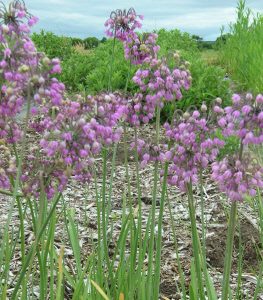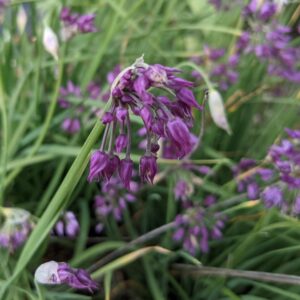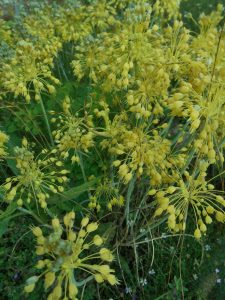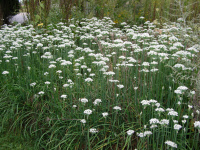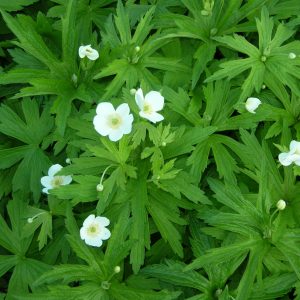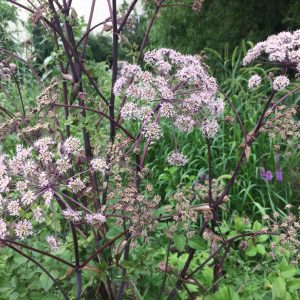Plants for Butterflies and Other Pollinators
Showing 9–16 of 223 results
-
Alcea rosea var. nigra Black hollyhock BIENNIAL Z 4-9
Early to late summer spikes of single jet-black/maroon platters.
Early to late summer spikes of single jet-black/maroon platters.
Size: 5-8’ x 24”
Care: sun in well-drained soil
Native: West Asia
Wildlife Value: Attracts bees, butterflies and birdsHollyhocks have been cultivated in China for thousands of years where it symbolized the passing of time. They cooked the leaves for a vegetable and also ate the buds. Transported from Middle East to Europe by the Crusaders and introduced to England by 1573. Grown in the Eichstätt Garden, the garden of Johann Konrad von Gemmingen, prince bishop of Eichstätt in Bavaria, c. 1600. Culpepper, a 17th century English herbalist, claimed the plant could be used to cure ailments of the “belly, Stone, Reins, Kidneys, Bladder, Coughs, Shortness of Breath, Wheesing, … the King’s Evil,, Kernels, Chin-cough, Wounds, Bruises, Falls. . . (and) Sun-burning.” Both single and double forms grew in England by the time of Parkinson (1629). Parkinson said they came “in many and sundry colours.” John Winthrop Jr. introduced the 1st hollyhock to the New World in the 1630’s.
In the 1880’s Mr. W. Charter of Saffron Walden in England cultivated frilly doubles, now known as ‘Charter’s Doubles.’
-
Allium cernuum Nodding onion, Prairie onion Z 4-8
Umbels of arching stems with nodding bells of lilac shading to pink
Umbels of arching stems with nodding bells of lilac shading to pink or occasionally white. May to June.
Size: 12”-18”x 3-6”
Care: sun to part shade in moist well-drained soil
Native: Canada to Mexico, Wisconsin native
Wildlife Value: nectar source for Hairstreak butterfly, Attracts hummingbirds.Cernuum is Latin meaning “nodding.” Many groups of 1st Americans ate the bulbs raw, roasted or dried for winter storage or as flavoring for soups and gravies. Cherokee used this plant medicinally to cure colds, hives, colic, “gravel & dropsy,” liver ailments, sore throats, “phthisic,” and feet in “nervous fever.” Those in the Isleta Pueblo were not quite as creative as the Cherokee and used this only for sore throats and infections. Meriwether Lewis collected this in Montana and wrote, “I met with great quantities of a small onion about the size of a musquit ball … They were crisp, white and well-flavoured. I gathered about a half a bushel of them before the crew arrivd.” Chicago is believed to be named for the Algonquin word for this plant chigagou.
-
Allium cyathophorum var. farreri Z 5-8
Clusters of nodding deep purple tubes flowering in late spring to early summer
Clusters of nodding deep purple tubes flowering in late spring to early summer
Size: 6-12” x 9-12"
Care: sun to part shade in moist to moist well-drained soil
Native: mountains of China.1st described in 1930.
-
Allium flavum var. minus Yellow flowered garlic
Umbels of shatter-shot yellow florets, like fireworks, bloom atop blue-green stems in July.
Umbels of shatter-shot yellow florets, like fireworks, bloom atop blue-green stems in July.
Size: 10” x 3”
Care: sun in moist well-drained soil
Native: Northern Turkey
Wildlife Value: resistant to rabbits & deer. Attracts bees and butterflies
Awards: species received Royal Horticultural Society Award of Garden MeritDescribed by Swiss botanist Pierre Edmond Boissier before 1885
-
Allium senescens Corkscrew allium, German garlic, Greater mountain garlic Z 4-9
Lavender balls, up to 30 of them, atop thin, bluish, strap-like, twisting foliage – mid-summer day’s dream.
Lavender balls, up to 30 of them, atop thin, bluish, strap-like, twisting foliage – mid-summer day’s dream.
Size: 6-12” x 6-12”
Care: sun to part shade in well-drained to moist well-drained soil
Native: Siberia
Wildlife Value: attracts butterflies & bees, deer & rabbit resistantCultivated before 1753. According to Philip Miller’s 1768 Dictionary, “planted in gardens for the variety of their flowers.”
-
Allium tuberosum Garlic chives
August & September bright white balls the size of golf balls on erect stems. Pretty in fall gardens.
August & September bright white balls the size of golf balls on erect stems. Pretty in fall gardens.
Size: 12-18” x 8”
Care: Full sun or shade in any soil
Native: SW Shanxi China
Wildlife Value: nectar source for many butterlies including the Tiger Swallowtail.Used medicinally in Asia as a remedy for incontinence, bladder weakness, kidney trouble and knee injuries. Traditional Chinese medicine practitioners made a powder from the seeds called Jiu Cai Zi used for numerous ailments. Widely grown as a vegetable.
-
Anemone canadensis Meadow anemone Z 3-8
Pristine pure white petal-like sepals frame many golden anthers in early summer
Pristine pure white petal-like sepals frame many golden anthers in early summer
Size: 12-24" x 12” spreading
Care: full sun to part shade in moist soil
Native: North America as far south as Missouri, Wisconsin native
Wildlife Value: pollen for small bees
Size: Good groundcover under trees where soil is moist, naturalized garden.Used medicinally by many Native American groups. The roots cleared up sores and leaves stopped nose bleeds for the Chippewa. It relieved the Iroquois of worms and counteracted witch medicine. For the Meskwaki this plant uncrossed crossed eyes. Ojibwa singers used it to clear their throats and remedy lower back pain. Sioux used the root to remedy several ailments – staunch bleeding, reduce lower back pain, sore eyes, crossed eyes and twitching of eyes. They also ate the root to clear the throat to boost good singing. Collected by Meriwether Lewis August 17, 1804 on the 1st leg of the Expedition.
-
Angelica sylvestris ‘Purpurea’ Wild Angelica Self-seeding Biennial Z 4-9
Wonderful deep purple stems and leaves with large umbels of purple-pink flowers late summer-early fall
Wonderful deep purple stems and leaves with large umbels of purple-pink flowers late summer-early fall
Can not ship to : Maine
Size: 6-8’ x 5'
Care: sun in moist to moist well-drained soil
Native: Europe in moist woodlands and bogs.
Wildlife Value: attracts bees and butterfliesThe species described in Species Plantarum 1: 251. 1753 (1 May 1753) by Linnaeus


